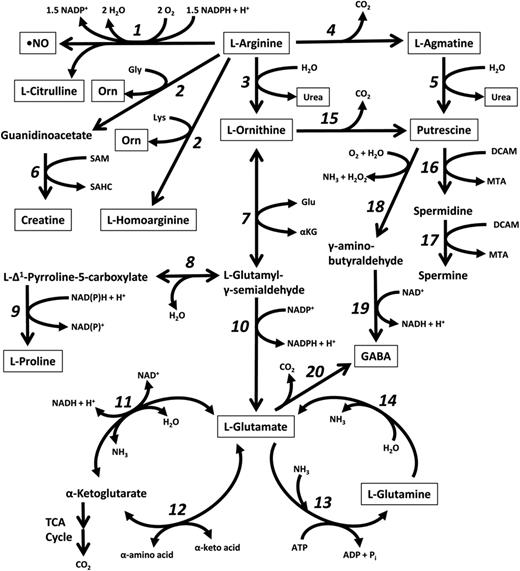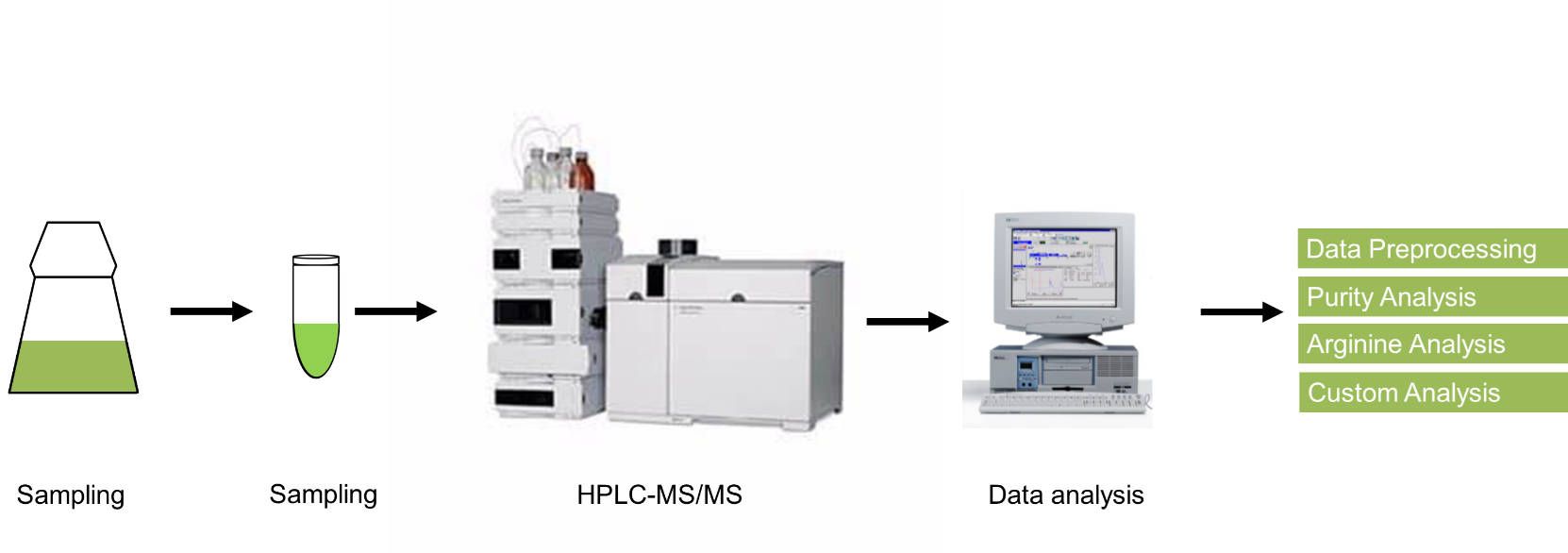v-innovate Technologies offers a rapid, highly selective high performance liquid chromatography-tandem mass spectrometry (HPLC-MS/MS) method to obtain the content of arginine and its derivatives and provide customers with detailed analytical reports. The method is sensitive, fast, reproducible and accurate, helping to accelerate the exploration of the mechanism of action of arginine and its derivatives and the application of its medicinal value to our customers.
Arginine is an amino acid compound that participates in the ornithine cycle in the human body, promotes the formation of urea, and converts the ammonia produced in the human body into non-toxic urea through the ornithine cycle. Arginine has three tightly bound nitrogen atoms in its side chain. It is an extremely alkaline amino acid with a pH of up to 12.5. Arginine metabolism ultimately produces a variety of biochemical products, including nitric oxide, urea, creatine, polyamines, proline, glutamate, agmatine, and homoarginine. The change of arginine concentration can also regulate cell metabolism and function through a variety of arginine sensors. Arginine forms an electrostatic complex with aspartic acid or glutamic acid to strengthen the tertiary structure of the protein. It also interacts with acidic groups attached to proteins, such as the phosphate groups of nucleic acids, thereby regulating the function of proteins, which are essential amino acids for maintaining growth and development. Arginine can be used in biochemical research. For example, as an intercellular messenger in the nitric oxide pathway, it plays an important role in the regulation of the nervous system. It is also used as a nutritional supplement, flavoring agent and food flavor in the food field.
 Figure 1. Pathways of arginine catabolism. (Morris 2016).
Figure 1. Pathways of arginine catabolism. (Morris 2016).
We can use the HPLC-MS/MS method to achieve the high-throughput detection and analysis requirements of the samples, and can quantify the arginine in a variety of samples and obtain detailed analysis reports.
 Figure 2. Arginine analysis service workflow.
Figure 2. Arginine analysis service workflow.
Detection method: HPLC-MS/MS
Mobile phase: use ammonium dihydrogen phosphate solution-acetonitrile as mobile phase
Elution mode: linear gradient elution
Detection wavelength: 206 nm
Injection volume: 25 μl
Flow rate: 1.0 ml/min
We can accept all kinds of specimens, such as serum, plasma, cell culture supernatant, urine, animal and plant tissues, etc. Please contact us for details.
We can use HPLC-MS/MS technology to achieve high-throughput and accurate identification and quantitative analysis of arginine and its derivatives, which will help researchers realize the comprehensive application of arginine in related fields such as food and medicine. v-innovate Technologies has relatively reliable bioinformatics analysis resources in the metabolic analysis of amino acids and their derivatives, which can meet your diversified testing needs, and we will wholeheartedly provide you with customized services.
References
